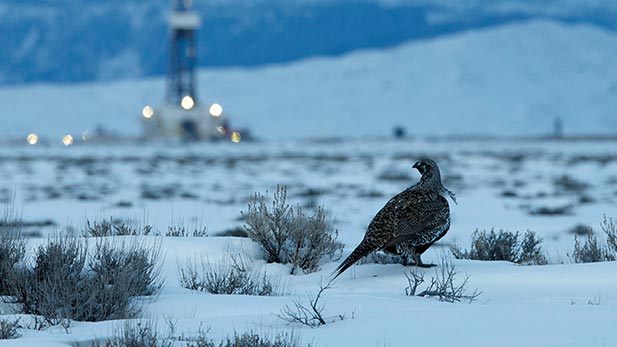 A male greater sage-grouse returns to an old lek where the howling winds now mingle with the din of machinery from nearby drilling. Pinedale region, WY.
A male greater sage-grouse returns to an old lek where the howling winds now mingle with the din of machinery from nearby drilling. Pinedale region, WY.
One of the most overlooked ecosystems on the continent consists of a massive sea of sagebrush that stretches across 11 states in the American West. This spartan yet spectacular landscape supports more than 170 species of hardscrabble birds and mammals. Among those that have adapted to survive here are birds found nowhere else: greater sage-grouse that lead remarkable lives mostly hidden in the sage. But once each year, males emerge for days on end to strut and display as prospective mates for discriminating females, which mate with only one or two of them. Females must then raise their chicks on their own, with little food, water or shelter to sustain them, while plenty of predators wait for their smallest mistake. Today, they must also contend with wells and pipelines tapping the resources buried deep below. The sagebrush and the grouse carry on, but they’re losing ground.
Nature: The Sagebrush Sea, Wednesday at 8 p.m. on PBS 6.
 A male greater sage-grouse returns to an old lek where the howling winds now mingle with the din of machinery from nearby drilling. Pinedale region, WY.
A male greater sage-grouse returns to an old lek where the howling winds now mingle with the din of machinery from nearby drilling. Pinedale region, WY.
 A male greater sage-grouse returns to an old lek where the howling winds now mingle with the din of machinery from nearby drilling. Pinedale region, WY.
A male greater sage-grouse returns to an old lek where the howling winds now mingle with the din of machinery from nearby drilling. Pinedale region, WY.
By submitting your comments, you hereby give AZPM the right to post your comments and potentially use them in any other form of media operated by this institution.